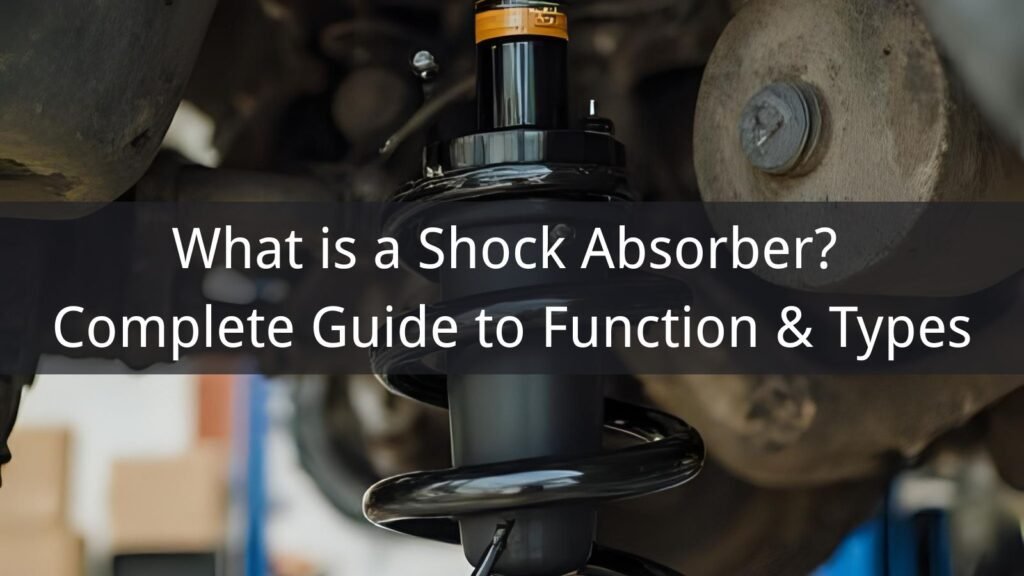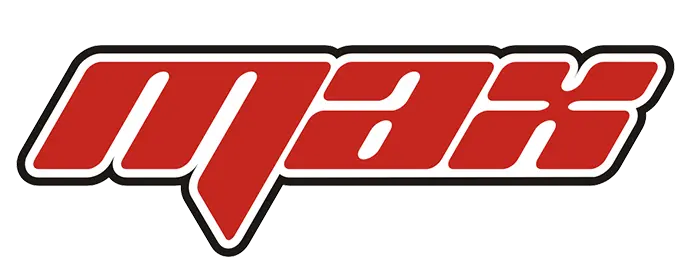
Shock absorbers are critical components in vehicle suspension systems that control spring oscillations and provide stability, comfort, and safety. This comprehensive guide explores shock absorber fundamentals, types, components, maintenance, and selection criteria to help you understand their vital role in automotive performance.
Table of Contents
What is a Shock Absorber?
A shock absorber, also known as a damper, is a mechanical or hydraulic device designed to absorb and damp shock impulses in vehicle suspension systems. These essential components work by converting kinetic energy from suspension movement into thermal energy, which is then dissipated through hydraulic fluid circulation.
The primary purpose of shock absorbers extends beyond just comfort – they’re crucial safety components that maintain tire contact with the road surface, control vehicle body movement, and ensure optimal handling characteristics. Without properly functioning shock absorbers, vehicles would experience excessive bouncing, poor steering response, and compromised braking performance.
Modern shock absorbers have evolved significantly from their early mechanical designs. Today’s shock absorber systems incorporate advanced materials, precise engineering, and sophisticated valve systems to provide superior performance across various driving conditions.
How Shock Absorbers Work
Understanding the operating principle of shock absorbers is fundamental to appreciating their importance in vehicle dynamics. The basic operation involves a piston moving through hydraulic fluid within a sealed cylinder, creating controlled resistance to movement.
| Component | Function | Material |
|---|---|---|
| Piston Rod | Connects piston to mounting point | Chrome-plated steel |
| Piston | Creates hydraulic resistance | Powder metallurgy |
| Cylinder Tube | Contains hydraulic fluid | Steel or aluminum |
| Hydraulic Fluid | Transfers energy and provides damping | Specialized oil |
When a wheel encounters a bump or depression, the suspension spring compresses or extends. The shock absorber’s role is to control this spring movement, preventing excessive oscillation that would otherwise continue long after the initial impact. This is achieved through carefully calibrated valve systems that regulate fluid flow during compression and rebound cycles.
The piston rod plays a crucial role in this process, transmitting forces between the wheel assembly and the vehicle body while maintaining precise alignment within the cylinder.
Types of Shock Absorbers
Modern vehicles utilize various shock absorber designs, each optimized for specific applications and performance requirements. Understanding these different types helps in selecting the appropriate system for your vehicle’s needs.
Twin-Tube Shock Absorbers
Twin-tube designs feature an inner working cylinder surrounded by an outer reservoir tube. This configuration allows for larger fluid capacity and better heat dissipation. These dampers are commonly found in passenger vehicles due to their cost-effectiveness and reliable performance.
Monotube Shock Absorbers
Monotube shock absorbers consist of a single cylinder with a floating piston separating hydraulic fluid from pressurized gas. This design offers superior performance and heat dissipation, making them ideal for high-performance and heavy-duty applications.
Coilover Systems
Coilover shock absorbers integrate the spring and damper into a single unit, providing compact packaging and adjustable ride height capabilities. These systems are popular in performance applications and aftermarket modifications. Our coilover solutions offer excellent adjustability and performance characteristics.
Gas-Charged Shock Absorbers
Gas-charged dampers use pressurized nitrogen to prevent fluid cavitation and maintain consistent performance across temperature ranges. This technology ensures reliable operation under demanding conditions.
Key Components of Shock Absorbers
Every shock absorber system comprises several critical components that work together to provide controlled damping. Understanding these components helps in maintenance decisions and performance optimization.
Piston Rod Assembly
The piston rod is arguably the most critical component, requiring exceptional strength and surface finish to withstand constant reciprocating motion. Hard chrome-plated piston rods offer superior corrosion resistance and wear characteristics, extending service life significantly.
Valve Systems
Sophisticated valve arrangements control fluid flow during compression and rebound cycles. These may include shim stacks, blow-off valves, and adjustment mechanisms that fine-tune damping characteristics.
Sealing Systems
High-quality seals prevent fluid leakage while allowing smooth rod movement. Premium sealing systems incorporate multiple seal stages and wear-resistant materials to ensure long-term reliability.
Springs and Support Components
Suspension springs work in conjunction with shock absorbers to support vehicle weight and provide initial impact absorption. Our shock absorber springs are engineered for optimal compatibility and performance.
Signs You Need Shock Absorber Replacement
Recognizing worn shock absorber symptoms is crucial for maintaining vehicle safety and performance. Early detection prevents more extensive damage and ensures optimal driving experience.
Visual Inspection Indicators
- Fluid leakage around the shock body or mounting points
- Physical damage to the rod or cylinder
- Excessive corrosion or surface deterioration
- Damaged or worn mounting hardware
Performance-Related Symptoms
- Excessive bouncing after hitting bumps
- Vehicle nosedive during braking
- Body roll during cornering
- Uneven tire wear patterns
- Poor ride comfort and increased cabin noise
Diagnostic Procedures
Professional diagnosis involves comprehensive testing using specialized equipment. Visual inspection, bounce tests, and road testing help identify performance degradation before complete failure occurs.
Maintenance and Care Tips
Proper maintenance significantly extends shock absorber life and maintains optimal performance. Regular inspection and preventive care prevent costly repairs and ensure safety.
| Maintenance Task | Frequency | Importance |
|---|---|---|
| Visual Inspection | Every 6 months | High |
| Mounting Point Check | Every 12 months | High |
| Performance Evaluation | Every 24 months | Medium |
| Complete Replacement | 50,000-100,000 miles | Variable |
Cleaning and Protection
Regular cleaning removes corrosive contaminants that can damage shock absorber components. Proper cleaning techniques preserve chrome plating and extend component life.
Environmental Considerations
Environmental factors significantly impact shock absorber performance and longevity. Salt exposure, extreme temperatures, and road debris require additional protective measures and more frequent inspection intervals.
Choosing the Right Shock Absorber
Selecting appropriate shock absorbers requires careful consideration of vehicle specifications, driving conditions, and performance requirements. The wrong choice can compromise safety, comfort, and vehicle dynamics.
Vehicle-Specific Requirements
Original equipment specifications provide the baseline for replacement shock absorbers. However, upgraded options may offer improved performance for specific applications. Consider factors such as:
- Vehicle weight and load capacity
- Suspension geometry and design
- Intended use and driving conditions
- Performance expectations and budget
Material and Construction Quality
Premium shock absorbers utilize advanced materials and manufacturing processes. Hard chrome-plated components offer superior durability and performance compared to standard alternatives.
Performance Characteristics
Different shock absorber designs provide varying performance characteristics. Sport-tuned units offer firmer control but may compromise comfort, while touring applications prioritize ride quality over ultimate performance.
Max Auto: Your Trusted Partner
At Max Auto, we understand the critical importance of quality shock absorber components in vehicle safety and performance. Our comprehensive product range includes shock absorber piston rods, sintered components, and complete suspension solutions.
Quality Assurance and Certification
Our TS16949 certification demonstrates our commitment to automotive quality standards. We utilize advanced testing equipment including projectors, roughness testers, micro hardness testers, and metallography analyzers to ensure every component meets stringent specifications.
Engineering Expertise
Our experienced engineering team provides comprehensive technical support throughout the product lifecycle. We offer OEM and ODM services, complete inspection reports including PPAP documentation, and ongoing quality tracking services.
Global Reach and Reliability
Max Auto products are trusted by customers across Europe, Japan, Korea, Africa, Canada, USA, and Australia. Our established reputation for quality and reliability makes us the preferred partner for automotive professionals worldwide.
Contact Information
For technical consultation or product inquiries, contact our team:
- Website: nbmaxauto.com
- Email: sales@maxautoparts.cn
- Phone: +86 15267273091
- Address: Building No.2, Jinshan Road No.788, Jiangbei District, Ningbo City, Zhejiang, China
- Hours: Monday-Friday: 9am to 6pm | Saturday, Sunday: Closed
Whether you need replacement components, performance upgrades, or technical consultation, Max Auto provides the expertise and quality products to meet your shock absorber needs. Our commitment to customer satisfaction ensures you receive reliable solutions backed by comprehensive support.
